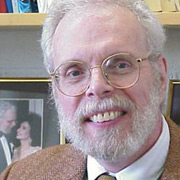Hold the AC
“We found what we initially thought were some strange results when we did the full-scale-building tests,” said Professor Glicksman. “But using the computer model, we now understand the physics of it, first of all confirming that it’s a real effect and second, why it occurred.” Such effects can be corrected by building in automatic control systems that, for example, turn on the vent fans just when needed to ensure the continuous flow of fresh air.
Based on their findings, the MIT team is formulating a simple, user-friendly computer tool that will help architects design for natural ventilation. They plan to incorporate the tool into their “Design Advisor,” a website that lets architects and planners see how building orientation, window technology, and other design choices will affect energy use and occupant comfort.
Glicksman hopes that the new tool and better understanding will help overcome the biggest challenge to natural ventilation—convincing architects and building operators that it will work and showing them how well it will work for proposed new designs.


